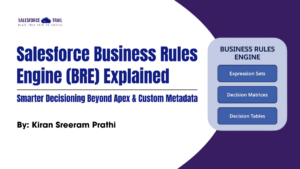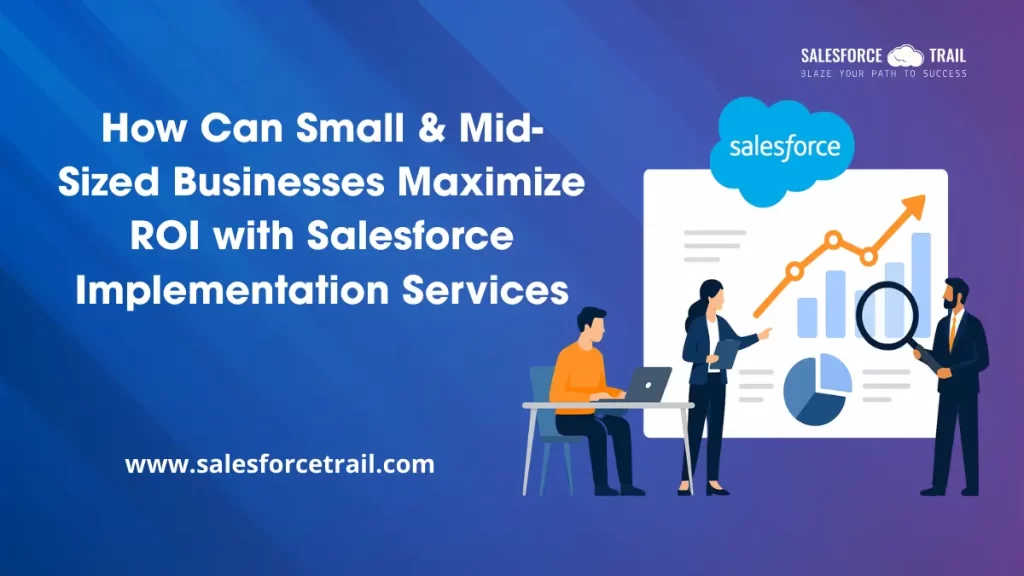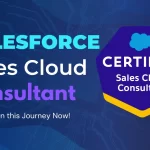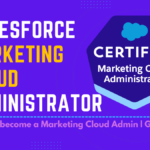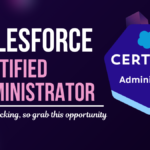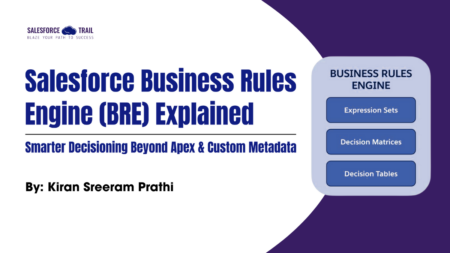Imagine spending money on a powerful piece of equipment, such as Salesforce, and watching it merely twiddle its thumbs or never get used to it. You can leave your business opportunities lying on the table. Sounds like a nightmare, right? However, here is the bitter fact: Even your investment won’t be fruitful if your strategy for Salesforce implementation, user adoption, and optimization is not the right one, and it may be an expensive failure. It is not only about purchasing the software. It’s about strategically getting the best out of Salesforce and maximizing its potential to turbocharge your growth, increase your sales, and improve your efficiency.
The high stakes are that small and mid-sized businesses that do not use their Salesforce to their full extent risk dwindling and falling behind competitors who can benefit from the platform’s full potential. Are you sure your Salesforce implementation works for you instead of against you? Here in this blog, we will highlight strategies that can make or break your Salesforce ROI. Prepare to learn, act, and avoid the pitfalls many businesses fall prey to. Don’t let your investment go down the drain; we should jump straight into the leading steps to make sure Salesforce brings the results you’ve been dreaming about.
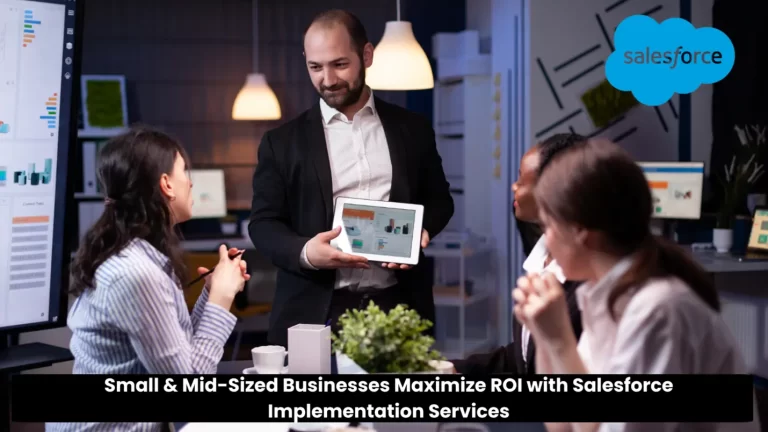
Best Practices to Maximize ROI with Salesforce Implementation Services
Strategic Implementation:
Define Clear Goals:
- It is very important to define what you want to achieve before implementing Salesforce. Do you want to improve sales, customer service, or data management? Writing down your goals from the start will make Salesforce revenue-oriented and results-oriented.
Thorough Planning:
- Create an extensive implementation plan that includes timelines, resources, and major milestones. Good planning helps lay down the groundwork for a smooth rollout and prepares your team for the transition.
Select a Skilled Partner:
- SMBs need to choose an experienced Salesforce implementation partner for their success. Find a partner who knows your business needs and can help you through consulting.
Prioritize Quick Start:
- In the same way, Salesforce has a QuickStart implementation, which is suitable for SMBs. It is configured for fast deployment with minimal customization. This approach helps you get your team up on the platform without the complication of deep customizations.
User Adoption and Training:
User Training:
- Excellent user training is essential for an effective Salesforce implementation. Offer overall training so that each team member is aware of how to utilize Salesforce’s features to the maximum extent.
Continuous Support:
- User adoption does not end with the first training exercise. Continuous support is essential in assisting users in conquering obstacles and realizing their highest potential in terms of productivity in the long run.
Focus on Adoption:
- Demonstrate to your team how Salesforce can be useful in everyday situations so that they can accept it. Make the user experience simple, such that it is intuitive and easy to embrace, and thus, Salesforce can be useful to all the parties concerned.
Ongoing Optimization and Data Leverage:
Leverage Data:
- Salesforce is an effective tool for gathering insight. Based on sales data, customer interactions, and other important figures, companies can make informed, data-based decisions that promote growth.
Automate Processes:
- Automate repeating tasks and workflows using Salesforce’s automation features. With less time spent on mundane business, your team will have more time to deal with strategic initiatives that help the business realize more value.
Utilize the AppExchange:
- AppExchange provides you with prebuilt apps that can boost your Salesforce instance. Check out these apps to make your Salesforce experience more personalized to cater to specific business requirements.
Process Improvement:
- Review your business processes and improve them constantly. Salesforce’s flexibility allows you to polish workflows, ensuring efficiency and productivity over time.
Monitor and Measure ROI:
- Monitor essential metrics regularly to assess Salesforce’s ROI. This will help you determine how successful the platform is in achieving its goals and what needs improvement.
Key Considerations:
Integration:
- Make sure that Salesforce integrates well with the rest of your business systems to allow the free flow of data without information silos.
Specialization and Flexibility:
- Design your Salesforce to align with your business’s needs while being flexible with your implementation according to the changes in your business’s nature as it grows and expands.
Conclusion:
It takes a strategic planning process, user adoption, and optimization, not an occasional exercise, to realize the best of Salesforce ROI. With clear objectives, in-depth training, automation of processes, and efficient use of data, SMBs can unlock the full potential of Salesforce and make their business grow exponentially. Although the implementation process should be considered and planned thoroughly, the long-term benefits of the successfully implemented Salesforce strategy cannot be questioned. By constantly remembering your business’s short-term and long-term requirements, Salesforce will be an excellent tool for driving your company further into success.
Must-Visit Links:
- How to Crack the Salesforce Interview: Real Questions and Tips from Experts
- How Much You Can Earn as a Salesforce Consultant in 2025?
- Top Most In-Demand Salesforce Skills for 2025: What Professionals Need to Know
- The Importance of Hands-On Experience in Mastering Salesforce Skills
- How I Passed the Salesforce Data Architect Exam on My First Attempt
- How to Prepare for the Certified Agentforce Specialist Certification Exam
Resources
- [Salesforce Developer]- (https://developer.salesforce.com/)
- [Salesforce Success Community] (https://success.salesforce.com/)
For more insights, trends, and news related to Salesforce, stay tuned with Salesforce Trail
- adminhttps://salesforcetrail.com/author/admin/
- adminhttps://salesforcetrail.com/author/admin/September 4, 2024
- adminhttps://salesforcetrail.com/author/admin/
- adminhttps://salesforcetrail.com/author/admin/


